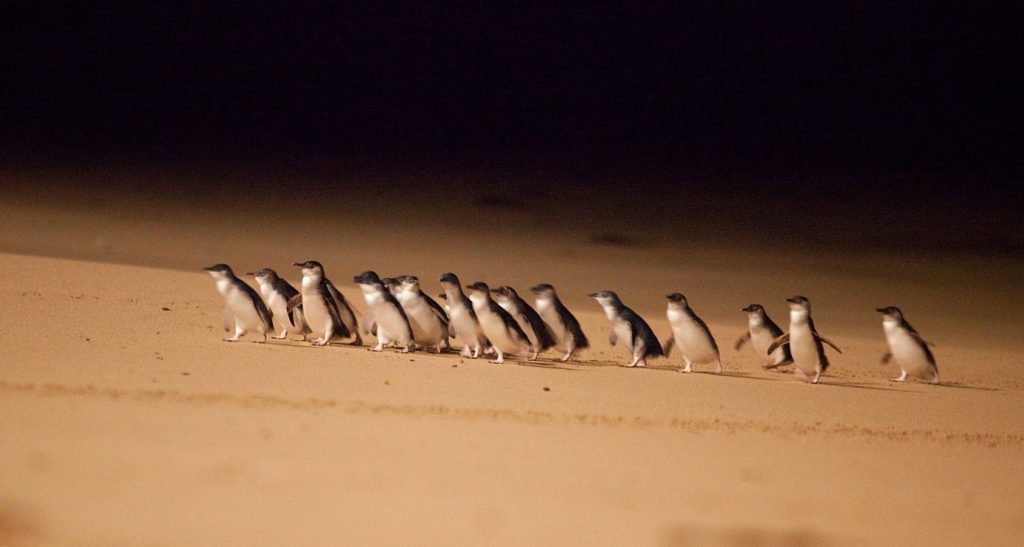
A parade of Little Penguins on Phillip Island. Image: Phillip Island Tourism.
Wipe those tears away. The third and final episode of the Magical Land of Oz aired last weekend, but you can still catch them all on ABC iView. And there’s still time to send us your animal, plant and fungi photos! Your snaps will help scientists get a better understanding of our unique biodiversity.
The human factor
The Magical Land of Oz finale focuses on Aussie animals that are affected by humans … and how animals have reacted in rapid, dramatic and surprising ways. Humans have changed how animals live, and we’ve affected which ones thrive. But it’s not just in the bush. Researchers have found hectare for hectare, our urban areas contain more threatened species than non-urban areas. It appears cities are in fact hotspots for Australia’s unique fauna.
In this episode we meet Australia’s contemporary success stories, and those being left behind. It was tough to do, but we’ve chosen three especially interesting animals from the final episode of Magical Land of Oz.
Little Penguins: Phillip Island, VIC
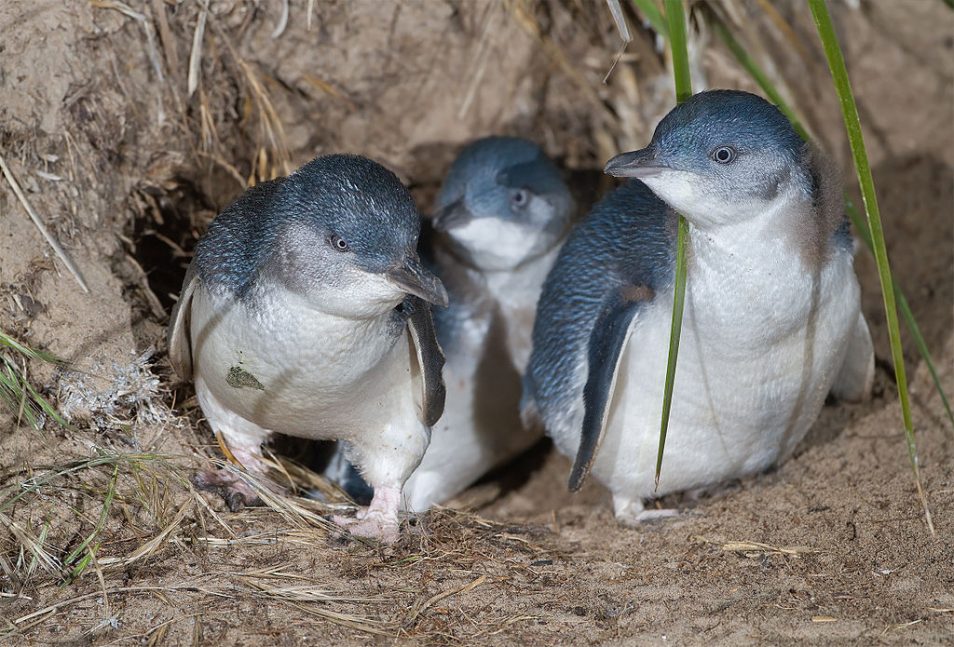
Little Penguin dads on Phillip Island. Little Penguin dads keep the kids warm and even lend a hand with incubation duties. Photo: JJ Harrison, Wikipedia
On the beaches of Phillip Island, an hour from Melbourne, is where the aptly named little penguin spends 80% of its time. It’s the world’s smallest penguin. It may be only 30cm long, but Magical Land of Oz footage shows the little penguin moving through the water like a tiny torpedo!
The population of Little penguins looked set for extinction due to the impact of human development, from new buildings, car strike, dogs and cats. But pioneering conservation efforts have lead to the population tripling since the 1980s. There are now about 32,000 (much-loved!) breeding adults.
Little penguins lay two eggs, which are in similar size to chicken eggs. Both parents take it in turns to incubate the eggs for approximately 35 days. Both parents feed their chicks by regurgitating fish and squid caught at sea. The male and female penguins also both do their fair share of the housework, working together to build and maintain their burrows. After about 10 weeks being looked after by their loving parents, the chicks will leave the nest and head out to sea to fend for themselves. Most penguins will also renew their pair bond each mating season.
Many miles from Phillip Island, we’re researching penguins in Antarctica. It’s a scientific fact that the only thing cuter than penguins is baby penguins, so of course our researchers have decided it’s essential to take super high-resolution photos of them! Together with the Korean Polar Research Institute, we’re using a Gigapixel camera to take photos of some seriously cute penguins so we can gain a better insight into their breeding habits in Antarctica. You can see some of the shots here.

In the winter, this area is covered in snow and ice, but in the warmer months, Gentoo penguins colonise for breeding season.
In the winter, this area is covered in snow and ice, but in the warmer months, Gentoo penguins colonise for breeding season.
Inland fish: Great Northern Highway, WA
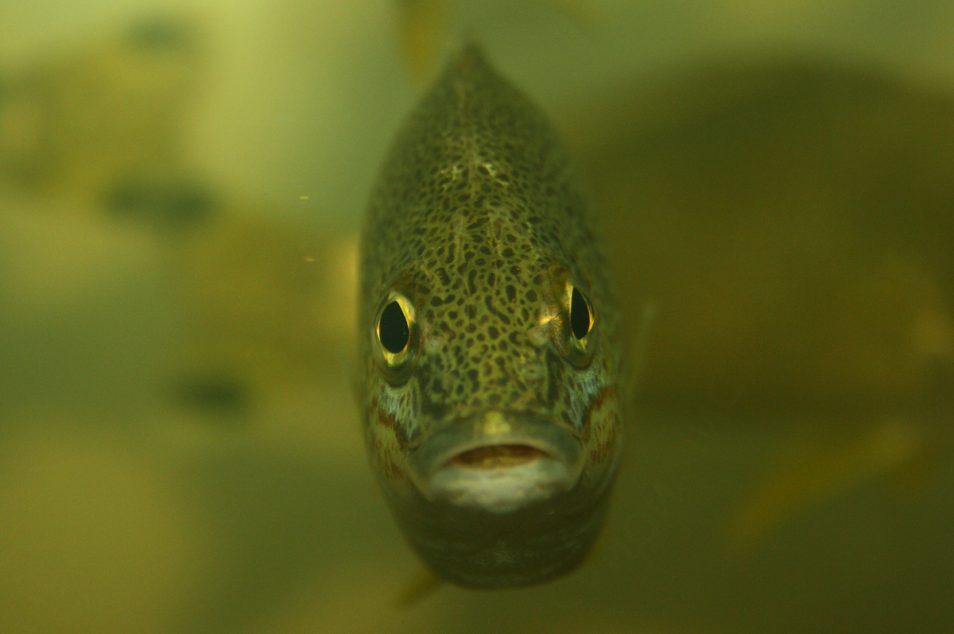
A Yellowtail Grunter, at North West Cape in Western Australia. Image: Bill & Mark Bell / Flickr.
In remote Western Australia, every so often, a storm sweeps in from the sea and brings floods to the arid Great Northern Highway. This triggers “magical events, like blooms of fish in the desert’s heart”.
Meet the yellowtail grunter, a small freshwater fish. Grunters wait out the dry season in small, ever-decreasing pools. But with these flash floods, comes an opportunity to disperse further. Magical Land of Oz shows yellowtail grunters trying desperately to swim in a shallow stream of water across a flooded road, dodging trucks and a flock of hungry birds, feasting on the exposed fish.
Life’s pretty tough for our freshwater fish. In Australia, 36 of our 280 species of freshwater fishes are listed as nationally threatened. In New South Wales fish communities are considered to be in poor condition across the state, and continue to decline within the Murray–Darling Basin. The widespread distribution of introduced carp in the Murray–Darling Basin has had a significant impact on the health of fish communities.
So how can we help our freshwater fish? We’ve spend many years developing a herpes virus to rid our rivers of pesky carp. You can read all our fishy research here.
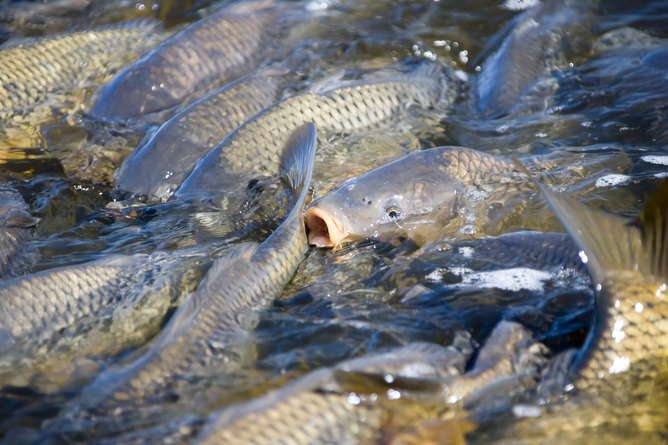
CSIRO has been testing in quarantine a new virus to control invasive carp. CSIRO
CSIRO has been testing in quarantine a new virus to control invasive carp. Image: CSIRO
Red fox: Sydney beaches, NSW
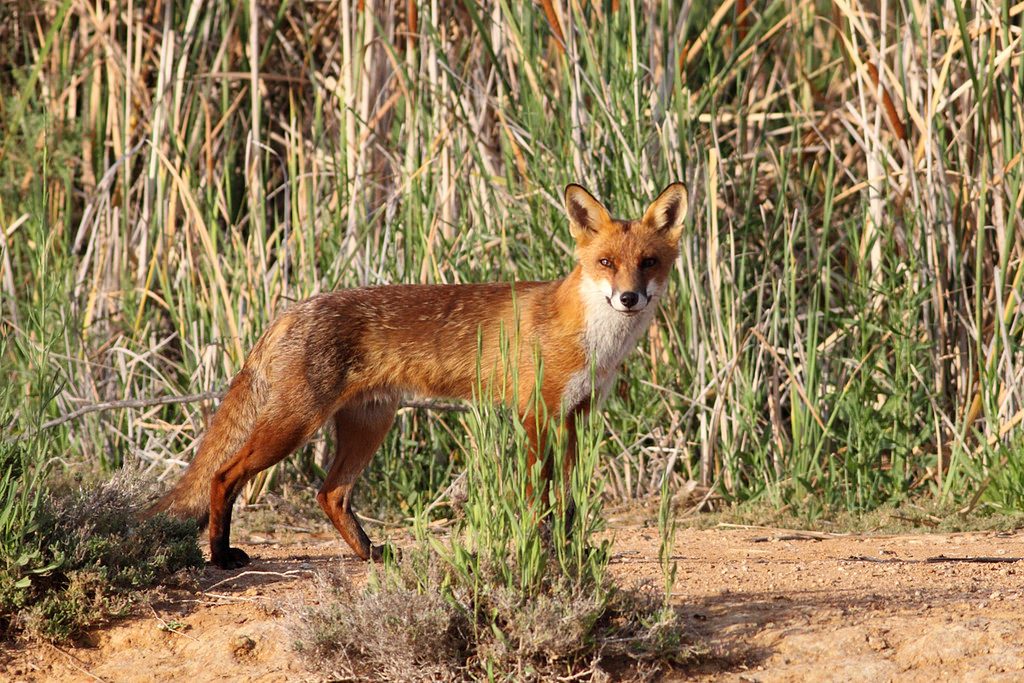
The introduction of the European red fox (Vulpes vulpes) has been disastrous for our local wildlife. Image: Harlz_
“As night falls, Sydney’s beach crowd leaves for home, and the stage is set for the next group of beach-goers: the feral red fox.” The fox is a fast-breeding introduced predator, secretive and deadly. Magical Land of Oz shows the red foxes scavenging on fast food scraps by the beach, and stealing biscuits from dog bowls in suburban backyards. But red foxes are not just scavengers: they shoulder the blame for Australia’s appalling record of mammal extinctions.
The fox (Vulpes vulpes) has caused the significant decline of many of our native terrestrial (ground-dwelling) animals including bilbies, wallabies and numbats. Imported from England in the mid-1880s for the sport of hunting, red foxes are now Australia’s most prevalent apex predator. It’s estimated there are now close to 7 million foxes in Australia.
Thankfully our tree-dwelling species are safe … or so we thought …
Scientists have captured video footage of foxes climbing trees *as high as four metres*, and showing predatory behaviour. University of Sydney researcher Dr Valentina Mella was studying koalas when she placed a camera in a tree on a property in the Liverpool Plains, north-west of Sydney.
“There was always a lot of sniffing and investigative behaviour by foxes where koalas and other native fauna had been, so I would say that the reason for climbing the tree was definitely to look for a prey,” Mella said. As if chlamydia and deforestation weren’t enough to deal with, our much-loved cuddly koalas now have to battle feasting foxes.
Mella had been warned she might see this kind of behaviour, the owner of the property had explained he’d seen the foxes in trees on many occasions. “Foxes are curious, agile and opportunistic,” she says. “It’s a terrible combination for native Australian animals.” You can read her research here.
How can you help our Aussie animals?
There are plenty of ways you can help reverse the impact of human encroachment on Australian wildlife. You can plant more native vegetation, keep your cat indoors, and keep your dog on a lead when you’re walking in bushland or on the beach. You can also help by sharing your nature photos.
We’re searching for photos of all creatures, big and small, to help us get a better picture of Australia’s unique biodiversity. We’ve partnered with the ABC to launch a photo round-up through the Atlas of Living Australia. Upload your photos today!

A parade of Little Penguins on Phillip Island. Image: Phillip Island Tourism.


4th March 2019 at 6:45 pm
Carp is a staple food in Iraq, Kyrgystan, Khazakhstan, Armenia etc… the whole central Asia region could be our trading partners for healthy Australian carp, which is a valued fish throughout Eastern Europe and Central Asia. Most rivers in the world are now diseased with the virus decimating carp fish stocks in their endemic areas. Australian and New Zealand rivers are healthy with healthy carp and it puts Australia at a great advantage to be able to trade in this essential fish stock and from wild catch, which is even better. Carp is like the chicken of the fish world, when grow wild in rivers, like it is in Australia, it’s high in omega 3 fatty acids, protein and the demand for carp is increasing in Australia with chefs beginning to use the fish. It doesn’t taste like mud when it’s freshly iced when caught and prepared well. Please work on developing a fishing and export industry for carp, working with Australian fish processors in Australia, work to create value added carp products like fish balls, fillets etc… which will be a sell-out in South East Asia & East Asia markets. Please don’t release any virus, discard it. Please abandon this destructive and frankly foolish notion. Don’t destroy a national resource, capture it and sell it, feed the world with it. Don’t poison rivers and don’t introduce any disease. Develop a fresh water fishing and export industry.